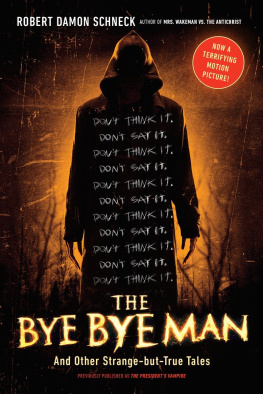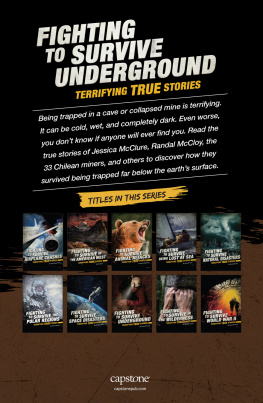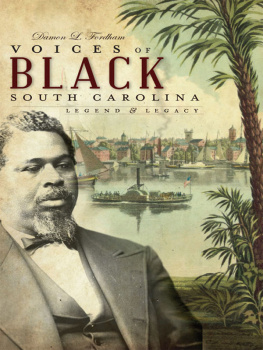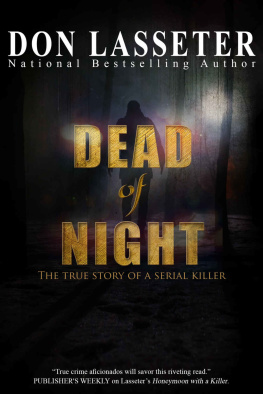

An imprint of Penguin Random House LLC
375 Hudson Street
New York, New York 10014
Originally published by Anomalist Books as The Presidents Vampire in 2005
First published by TarcherPerigee as The Bye Bye Man in 2016
Copyright 2005 by Robert Damon Schneck
New Afterword copyright 2016 by Robert Damon Schneck
Penguin supports copyright. Copyright fuels creativity, encourages diverse voices, promotes free speech, and creates a vibrant culture. Thank you for buying an authorized edition of this book and for complying with copyright laws by not reproducing, scanning, or distributing any part of it in any form without permission. You are supporting writers and allowing Penguin to continue to publish books for every reader.
An earlier version of the chapter entitled The Presidents Vampire appeared in Fortean Times , November 2004. The God Machine was first published in Fortean Times , June 2002, and a portion of The Bye Bye Man (previously published as The Bridge to Body Island) appeared in Swank , February 2002.
After 18 Years, Missing Teens Bodies Found in Submerged Van, March 3, 1997, is reprinted with permission of The Associated Press.
Tarcher and Perigee are registered trademarks, and the colophon is a trademark of Penguin Random House LLC.
Most TarcherPerigee books are available at special quantity discounts for bulk purchase for sales promotions, premiums, fund-raising, and educational needs. Special books or book excerpts also can be created to fit specific needs. For details, write: SpecialMarkets @penguinrandomhouse.com.
Library of Congress Cataloging-in-Publication Data
Names: Schneck, Robert Damon, author.
Title: The Bye Bye Man : and other strange-but-true tales of the United States of America / Robert Damon Schneck.
Other titles: Presidents vampire.
Description: New York : TarcherPerigee, 2016. | Originally published: San Antonio, Tex. : Anomalist Books, c2005. | Includes bibliographical references and index.
Identifiers: LCCN 2016014347 (print) | LCCN 2016016803 (ebook) | ISBN 9780143129721 (paperback) | ISBN 9781101993361 (ebook)
Subjects: LCSH: ParapsychologyUnited States. | Supernatural. | OccultismUnited States. | SpiritualismUnited States. | BISAC: BODY, MIND & SPIRIT / Unexplained Phenomena. | BODY, MIND & SPIRIT / Mythical Civilizations. | BODY, MIND & SPIRIT / Supernatural.
Classification: LCC BF1028.5.U6 S36 2016 (print) | LCC BF1028.5.U6 (ebook) | DDC 001.940973dc23
LC record available at https://lccn.loc.gov/2016014347
Motion picture artwork 2016 STX Financing, LLC. All rights reserved.
Version_1
This book is dedicated with much love, to my parents, Beverly and Arnold.
CONTENTS
INTRODUCTION
Unbelievable but true events that are beyond scientific understanding, beyond rational explanation. They will whet your imaginations appetite in the startling breathtaking pages of ImpossibleYet It Happened!
The bottom shelf of my bookcase is devoted to a single genre (or sub-genre) of literature known as the strange-but-true. I have about a dozen of them there including Frank Edwards seminal Stranger Than Science, along with his rivals and imitators Strange Monsters and Madmen; ImpossibleYet It Happened!; Things; More Things; Ghosts Ghouls & Other Horrors; Vampires, Werewolves and Ghouls; This Baffling World; No Earthly Explanation; Strange Encounters with Ghosts; Strange Guests; Strange Disappearances; Strange Unsolved Mysteries ; and Strangely Enough! Its not a pretty collection, and it wouldnt look good under glass, but their shabbiness is a testament to being read. If I understood The Velveteen Rabbit correctly, its the most loved toys that are left in the worst shape and the same applies to books. Every dog-eared page, cracked spine, and water-damaged cover is visible evidence of being carried around in book-bags with half-eaten peanut-butter sandwiches and read at the dinner table, in the bathtub, and discreetly during math class (I missed fractions completely). As for quality, theyre mostly hackwork, with the contents lifted from back issues of Fate magazine and laid out in the pattern set by Frank Edwards: take dozens of bizarre and/or inexplicable stories, retell them in two or three pages, and top it off with a lurid title.
Some are paranormal (The Hep Poltergeist That Dug Rock and Roll, Tennessees Horrible Wart Monster, Cigar in the Sky) but there are also unexplained disappearances, natural and historical mysteries, gruesome murders, peculiar ideas (like perpetual motion, the hollow Earth), and even unusual diseases (The Boy Who Died of Old Age). I loved them all, and they became part of the permanent furniture of my mind.
Not everyone shared my enthusiasm. Teachers, for example, were more interested in the principle exports of Bolivia than the nine basic categories of sea serpents, an attitude that baffled me then and still does today. Also, young readers would be well advised to avoid these subjects in their schoolwork; too many papers on vampire-killing techniques, headless ghosts, or living dinosaurs in the Congo, and youll be taken to an office where people with soothing voices show you inkblots. Many still consider a fascination with strange subjects to be a symptom of maladjustment, and even I am considered a bit eccentric, a perception reinforced by nocturnal lemur-like habits, numerous obsessions, and several phobias.
I Digress
Strange-but-true stories have been recorded since people began writing. Ancient literature is full of wonders, and chroniclers of the period did not see the fantastic as somehow separate from subjects like politics and war. For example, Herodotus, The Father of History, described races of monstrous men, swarms of winged snakes, gold-guarding Griffins, and countless other marvels. Medieval and renaissance tales are top-heavy with miracles, and the Revs. Increase and Cotton Mather continued the collecting of Memorable Providences in the New World. The nineteenth century turned out numberless pseudoscientific and spiritualist books, along with pamphlets describing local oddities and the true histories sold by sideshow performers, most of whom were apparently captured after a bloody struggle in the jungles of Borneo. Cartoonist Robert L. Ripleys popular newspaper column, Believe It or Not! first appeared in 1918, but for many the modern era of strange-but-true writing began a year later with the publication of Charles Hoy Forts The Book of the Damned .
Fort (18741932) was a journalist and novelist from Albany, New York, who spent most of his time in libraries copying down the anomalies reported in newspapers, magazines, and scientific journals. He was not too discriminating about sources, but the sheer quantity of data are startling, and The Book of the Damned was followed by three more; New Lands (1923), Lo! (1931), and Wild Talents (1932). Fort was interested in producing something more than entertaining collections, however, and the damned he referred to were those things that had been excluded or ignored by science.
Mysterious phenomena suggest that laws of nature are not fully understood, but Fort took an extreme position, writing, I conceive of nothing in religion, science or philosophy, that is more than the proper thing to wear, for a while. In other words, everything is somewhat true, somewhat false, and always changing.
Fort was also a wag and offered waggish solutions for the mysteries he collected. How were the pyramids built? I now have a theory that the Pyramids were built by poltergeist-girls, In addition, Fort coined the word teleportation and invented a game called super-checkers.
Next page













